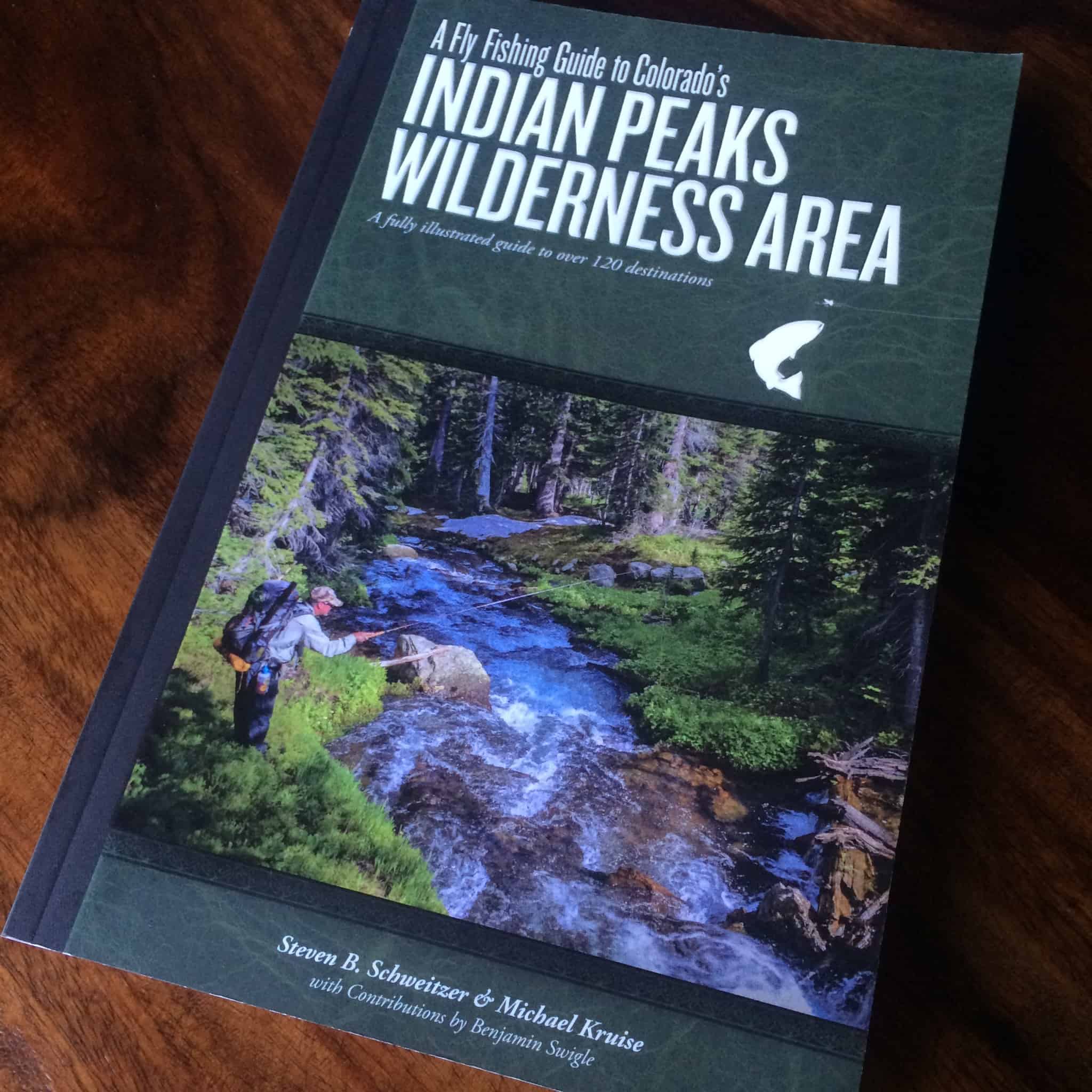I use all sorts of guide books. Whether for fly-fishing, for hiking a new wilderness area or rock-climbing, they are invaluable resources that will save you a lot of time and potentially keep you out of danger.
A few years ago I visited Colorado for my first time. A mandatory stop, of course, was Rocky Mountain National Park. One of our customers and tenkara angler Steve Schweitzer happened to be the author of the acclaimed book “A Fly Fishing Guide to Rocky Mountain National Park”. He caught wind of my visit and asked a local fly-shop to put one of his signed copies aside for me. The moment I picked it up I knew this was going to be a very high quality fly-fishing guide book. Flipping through the pages confirmed my first impression.

Now Steve, along with Mike Kruise, released the long anticipated guide book to Indian Peaks, a beautiful wilderness area just West of Boulder, Colorado, and “essentially a southern extension of Rocky Mountain National Park”. There wasn’t a huge of amount of information for fly-fishing the area, and now “A Fly Fishing Guide to Colorado’s Indian Peaks Wilderness Area” makes it easy to know where to go
Like his first book, the Indian Peaks guide book is beautifully designed and thoughtfully laid out from cover to cover. I loved the format of both of his books, which featured topographic maps as well as elevation gain charts – after all, in this mountain region you will certainly want to know whether a stream that is just one mile away has a 500ft elevation gain or 2,000 ft!

The most unique thing about this guidebook is the inclusion of tenkara on multiple fronts. I don’t know if you noticed the picture of the cover above, but the cover itself features an angler, as a matter Steve Schweitzer himself using tenkara (he’s using the 12ft Iwana). This may be the first time a tenkara angler is being featured in a book designed for a larger audience and not specifically written about tenkara. And, this is fitting, for the Indian Peaks Wilderness (like most areas in Colorado) is absolutely tenkara-perfect. The book has over 120 destinations, and admittedly the majority of the destinations are lakes. But, there is also an abundance of streams coming out of lakes, joining lakes together. Each of those streams is best fished with a tenkara rod, in my biased opinion. And, since the majority of lakes requires long hikes, a tenkara rod is, again in my biased opinion, best fished with tenkara.
In addition to the cover, Steve asked me to write a section about tenkara for his book. So, I wrote a short section about the use of tenkara in the area. Most guidebooks feature a section early on about the best equipment and techniques to use, Steve and Michael are ahead of the curve in realizing that tenkara has a legitimate place and must be mentioned. The second edition of the Rocky Mountain National Park book also features a section on tenkara.
In the tenkara section of the book I briefly discuss the philosophy of “one fly” and the fact that, in my experience, one can use just about any fly in the area. At the end of the book there is a section with flies recommended for the area, featuring 54 flies. I was delighted to see a couple of tenkara flies included this time, the Ishigaki and the Oki kebari.
Anyone planning on visiting this area must get a copy of “A Fly Fishing Guide to Colorado’s Indian Peaks Wilderness Area”, it’s a great resource for an area that I love and is absolutely tenkara-perfect.
